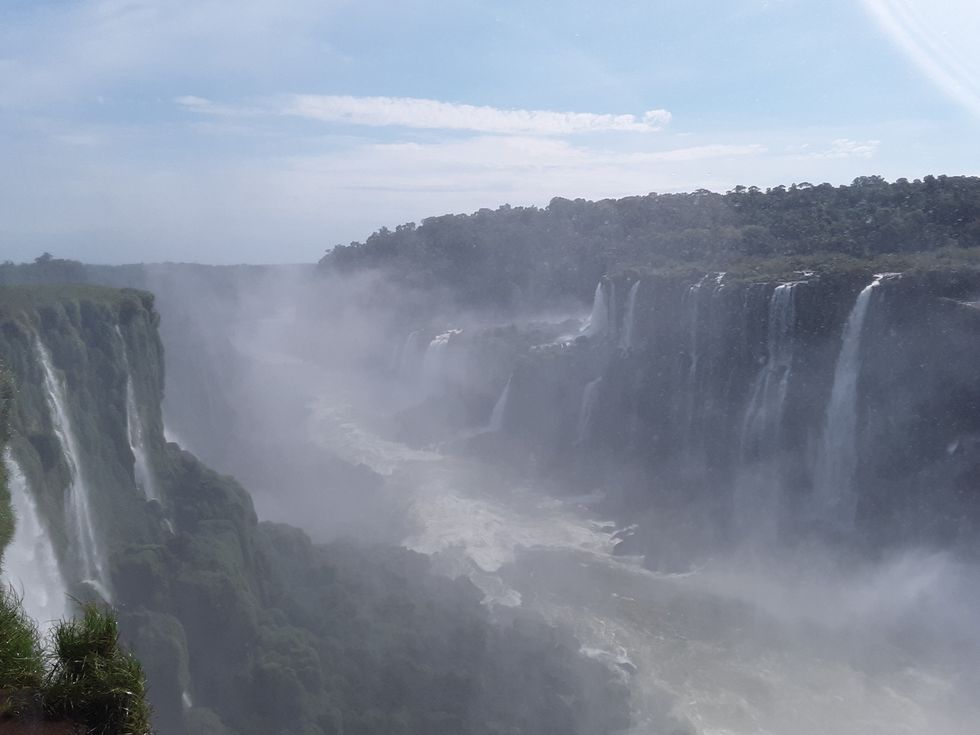One of my favorite choral composers, Daniel Elder, has a setting of Sara Teasdale's poem "May Night." An infinite number of poems have been written about the joy of springtime. This one is interesting—exhilarating, even—because it speaks of a beautiful night in the spring. The remarkable energy in this musical setting comes from the sun having gone down, but the new life of spring—fueled by that same sun—lingering on. It's very beautiful.
The picture above was taken just under a year ago at the Iguazú waterfall in Argentina (and Brazil), on the border with Paraguay. Since that's in the southern hemisphere, it's actually the beginning of autumn there at the end of March, but it was still summer-like up in the jungle. I had a bad cold or something while I was there, but I'm still glad I went. It was marvelous; after all, the waterfall is one of the 7 Natural Wonders of the World.
Right now, as we're all aware, the world is topsy-turvy. It's probably a very real danger that the sense of disorientation that a lot of us are feeling will lead to a pretty bad emotional slump. Spring has still arrived, though, and we'll get to see it bloom like always. "The spring is fresh and fearless," as Sara Teasdale says. This time of social distancing, with its upending of routines, is cause for anxiety for a great amount of people. There are two types of waiting: anxious waiting, and peaceful waiting. In T.S. Eliot's great poem 'Four Quartets,' we hear that "the faith and the love and the hope are all in the waiting." I don't think that such a beautiful sentiment is an invitation to apathy; we shouldn't ignore the serious problems facing many people. As far as we can we should do our part to not be apathetic.
But as for the moments of simply waiting in the gap between moments of normalcy, it's good to be assured by the certain hope of the coming of spring, coronavirus or not.






 The minimum wage is not a living wage.
StableDiffusion
The minimum wage is not a living wage.
StableDiffusion
 influential nations
StableDiffusion
influential nations
StableDiffusion







